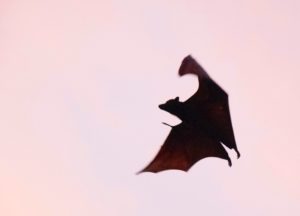Nosferatu. Dracula. The Lost Boys. And yes… even Twilight.
These are just some of the most famous vampire stories in cinematic history. But the truth is that there are dozens upon dozens more works of vampire fiction out there… from books to TV shows and even urban legends.
We all know them as the pale, immortal, blood-thirsty creatures of the night. But are vampires real?
If you’ve dabbled with enough vampire fiction, you’ve probably wondered this same question… and possibly others.
Where does the concept of vampires originate from? Where in the world is vampire folklore still influential? And what are the most famous vampire legends of all time?
In honor of our own vampiress, Lady Cassandra, Thrillvania is here to finally put the old question to rest:
Are vampires real? Read on to find out!
What Is a Vampire? Are Vampires Real?
Man’s long fascination with vampires is possibly rooted in our understanding of mortality. No one can live forever. But many of us wish we could.
To grapple with this, humans conceptualized immortal beings back in the ancient times… and they continue to do so to this day.
Vampirism may be the most prominent fictionalized concept of immortality. The concept not only entails the belief in vampires but their practices, as well.
In case you’re not already familiar, let us bring you up to speed. Vampires are supposedly reanimated beings who are not dead but not living.
To survive, they must feed on the energy of the living, usually blood. Some believe that vampires have deadly aversions to sunlight, garlic, or holy water. It’s often believed that they can’t cast reflections, can’t go out in the day, can turn into bats, or sleep in coffins.
But these beliefs can vary depending on which vampire folklore you’re following.
So, are vampires real?
Likely not. One scientist even proved that it’s mathematically impossible for vampires to exist. Because if they did, every human on earth would be a vampire at this point in time.
Despite this, many people still believe that vampires exist. And it’s no wonder that they do if you consider the long history of the vampire as a myth.
The History of Vampirism
Vampires are one of the oldest creatures in the history of mythology.
It’s widely believed that an Italian man named Ambrogio became the first vampire. It’s believed that a prophet known as the Pythia cursed him in the Greek city of Delphi. He later formed the first vampire clan back in Italy.
Then there were the Hebrews, who believed in Alukah, a monster who fed on the blood of other animals. Meanwhile, others believe that the concept of vampires originated in Mesopotamia, Egypt, or as far east as Tibet. But over time, vampire folklore evolved into what we know it as today from places like Romania and Serbia. And as Catholicism spread, so did the legends and beliefs surrounding vampiric practices.
The history of vampirism is long – to say the least. To understand the history better, it helps to learn more about famous vampire legends. Which we’ll delve into next!
Lilith
In Jewish mythology, it’s believed that the first vampire was a female entity known as Lilith. In Hebrew, the name Lilith derives from the word “Lila”, which translates to night. And Lilith as a Jewish myth is synonymous with “creature of the night”.
According to the legend, Lilith was Adam’s first wife. After disobeying him, she’s transformed into a demonic, immortal entity. To survive, she feeds on the innocent living, while also preying on men’s desires.
Sava Savanović
In the Serbian village of Zarožje comes the rural legend of Sava Savanović. It’s believed that this vampire kills those who visit the local watermill deep in the valley. He may not be one of the first vampires in Serbian folklore. But he is one of the most famous.
The actual watermill itself connects to the Rogačica River. The watermill operated until the 1950’s. And today, the town of Zarožje is a popular tourist attraction among vampire fans.
Vlad the Impaler
Dracula’s the quintessential vampire, with fangs and a black cape, right? In the 19th century Irish novel, yes. But the legend of Dracula is actually inspired by the true story of Vlad the Impaler.
Vlad the Impaler, otherwise known as Vlad Dracula or Vlad III, ruled over what is now modern-day Romania. Back then it was Wallachia, and Vlad held three reigns between 1448 and 1476.
So, where does the Impaler part come into play?
He’s recognized for defeating the Ottomans and protecting Transylvania and the rest of Europe. But he’s also known for being a harsh ruler who impaled anyone – poor or aristocratic – who opposed him.
And that’s not even the half of it. Vlad the Impaler is also known for dipping bread into the blood of those impaled… and eating it. Hence, the inspiration for Dracula the vampire as we know him today.
Countess Elizabeth Bathory
It may be mathematically impossible for vampires to exist. But throughout history, there have been people who’ve done things to make you think twice.
Take Countess Elizabeth Bathory, for example. Not only was she born in Transylvania, the supposed motherland of vampires. She was a Hungarian noblewoman in the late 1500’s to the early 1600’s… and an alleged serial killer, as well.
In fact, reports indicate that she kidnapped, tortured, and murdered hundreds of girls. She’d smother her servant girls in honey and allow bees and other insects to attack them. It’s even said that she bit the flesh off of her victims and bathed in the blood of virgins to preserve her youth.
Chiang-Shih
There’s no doubt that there’s a strong presence of vampire folklore in Europe. But vampires are also present in Chinese folklore.
The Chiang-Shih, for example, is the belief that everyone has an inner vampire. According to Chinese belief, everyone has two souls: a superior soul and an inferior one.
Unlike vampires who can rise from the dead, the Chiang-Shih is capable of leaving the body as it sleeps. The superior soul is what leaves the physical body to wander and possess others. It’s also known for having red eyes and long claws.
Satisfy Your Appetite for Vampires This Halloween
So, are vampires real?
It’s tough to say. Physicists and mathematicians may have proved that it’s impossible for them to exist. But if you’re someone who believes in the paranormal, who’s to say that vampires can’t exist, as well?
If you’re a fan of vampire legends, Thrillvania Haunted House has the perfect experience in store for you! Experience the horrors that Vampress Lady Cassandra left behind at Verdun Manor… and those that her werewolf husband, Baron Verdun, left behind, as well.
Get your tickets today through November 3rd!


